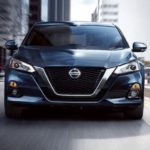Doing anything for the first time is always the hardest, and buying a car is no exception. The number of options available these days can leave even a seasoned car buyer confused. Not only do you have a multitude of makes and models to choose from, but you also have to decide between buying new or shopping for a used car. While new cars offer the most features and factory support, used cars are generally a better choice for first-time buyers. However, it may seem tempting to simply visit your Certified Pre-Owned Ford dealership to get the best of both worlds. On the surface, Certified Pre-Owned (CPO) models offer both used car prices and new car warranties––but in reality, they may well be the worst of both worlds. This is especially true of the extended CPO programs now being offered by manufacturers like Ford and Honda.
What Is Certified Pre-Owned?
For those unfamiliar with CPO programs, every manufacturer has its own program with its own set of criteria for what makes a CPO vehicle. Toyota, for example, requires that all CPO vehicles be less than seven years old with fewer than 85,000 miles on the odometer. If they pass those basic requirements and a 160-point inspection, they can then be marked as CPO and sold with a 12-month/12,000-mile basic warranty, 7-year/100,000-mile powertrain warranty, and other factory benefits. Most manufacturers have similar, although not identical, requirements and benefits for their CPO models.
Only dealers affiliated with a manufacturer can offer that manufacturer’s CPO program (i.e. a CPO Ford model can only be sold by a Ford dealership), though it is entirely up to the dealer whether they choose to apply for the manufacturer’s stamp of approval on any used vehicle they sell. Because of the extra work and cost that goes into certifying a used vehicle, dealers will usually only opt to certify the newest and lowest-mileage used cars they sell––if they choose to sell CPO models at all. This means that it is rare to find a CPO vehicle for sale that is more than around three years old.
However, some manufacturers are beginning to extend the CPO label to vehicles that would not traditionally meet its strict requirements. Ford was one of the first, offering two tiers of its Blue Advantage CPO program: Gold Certified and Blue Certified. While Gold Certified is your traditional CPO model, Blue Certified is little more than a basic used car. Not only does it include models that are up to ten years old with as many as 120,000 miles on them, but Blue Certified vehicles only come with a 90 day/4,000 mile warranty and a few other benefits.

Why You Should Avoid CPO
At first glance, buying CPO is a way to enjoy factory support on an affordable used car. Unfortunately, things are more complicated. First off, it is extremely rare to find a CPO model that is significantly more affordable than a brand-new car––especially given the current inflated used car prices. In fact, you may well be looking at paying more than the new MSRP for many lightly-used CPO vehicles these days. If you have that sort of money for your first car, you will be much better off simply buying a brand-new vehicle and enjoying even more benefits.
After all, while a CPO vehicle must meet stringent manufacturer requirements before being sold, it is ultimately still a used car. No matter how detailed the CARFAX vehicle history report is or how few miles are on the vehicle, you have no real guarantee that it is in good condition. Perhaps the previous owner decided to skip an oil change or two, or maybe they sold the vehicle because it had issues that weren’t quite severe enough to warrant declaring the vehicle a lemon. While not common, these are certainly possibilities when shopping for any used car. With a normal used car, it’s a matter of risk vs reward––you’re accepting there is a risk that the vehicle might need work, but you are getting a car at a substantially lower price than shopping new. Indeed, any maintenance required to bring a used car up to spec is generally a fraction of the savings you are getting by buying used.
However, with a CPO vehicle, the risk vs reward ratio is turned on its head. Now you are paying new-car prices for a used vehicle with an uncertain past. The only real benefit of buying CPO is the factory warranties––but even those are less of an advantage than you might expect. New vehicle warranties are generally transferable, which means used car buyers benefit from any remaining warranty. Since most new cars come with a 3-year/36,000-mile limited warranty and a 5-year/60,000-mile powertrain warranty, that means most CPO models are actually still eligible for a decent amount of the original new vehicle coverage. While the CPO warranty provides a bit more coverage, it isn’t as much as it might appear. That’s not a good deal in anyone’s books and has contributed to many dealerships moving away from selling CPO models.
Buy Used, Buy New, Or Lease – Don’t Buy CPO
Overall, new buyers are best served with a used car. Used cars are by far the most affordable option, and they are available at every price point imaginable. Whether you have the budget for a two or three-year-old vehicle that still has some original warranty coverage left or want to pay cash for a fifteen-year-old beater, you can find a used car that will work for your financial situation. The low prices of used cars are particularly important because most first-time buyers are still building their credit history and may not be able to secure a loan for a brand-new model. Financially, you will always be better off buying a car that fits comfortably into your budget rather than stretching your money to get the most expensive vehicle you can manage.
If you do have money for a new model, you also have the option of leasing your next vehicle. This will get you into a brand-new car with full factory warranty coverage for a lower monthly payment than the price of most CPO vehicles. Leases also don’t require getting approved for a loan, which can be a big benefit to new buyers who may have landed their first good-paying job but still don’t have much of a credit history. However, leases come with mileage limits and other restrictions, and while the monthly payments will be low, you will almost always end up paying more overall than you would have buying the vehicle (dealers have to make a profit somewhere, after all). This means that unless you really want that new car and factory warranty, you are probably still better off looking at a used car.
Finally, you have brand-new cars. A new car will give you the ultimate peace of mind that comes with knowing you are the first owner, they come with the best warranties and factory support, and they don’t have any of the restrictions that come with leasing. However, buying a new car requires either a solid credit history or enough money to pay cash, both of which can be challenging for first-time buyers. Even if you do have the money for a brand-new car, the massive depreciation during the first few years of ownership means that buying new will cost more than buying used. So if money is a concern, buying used can still be the wisest choice.





